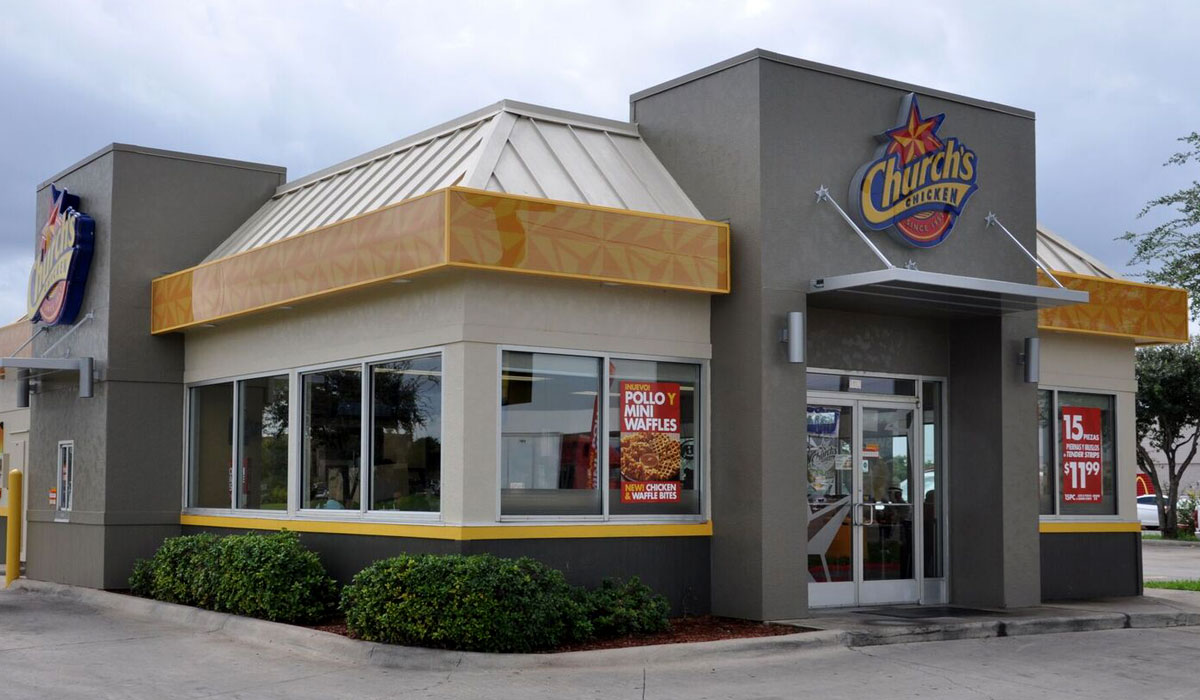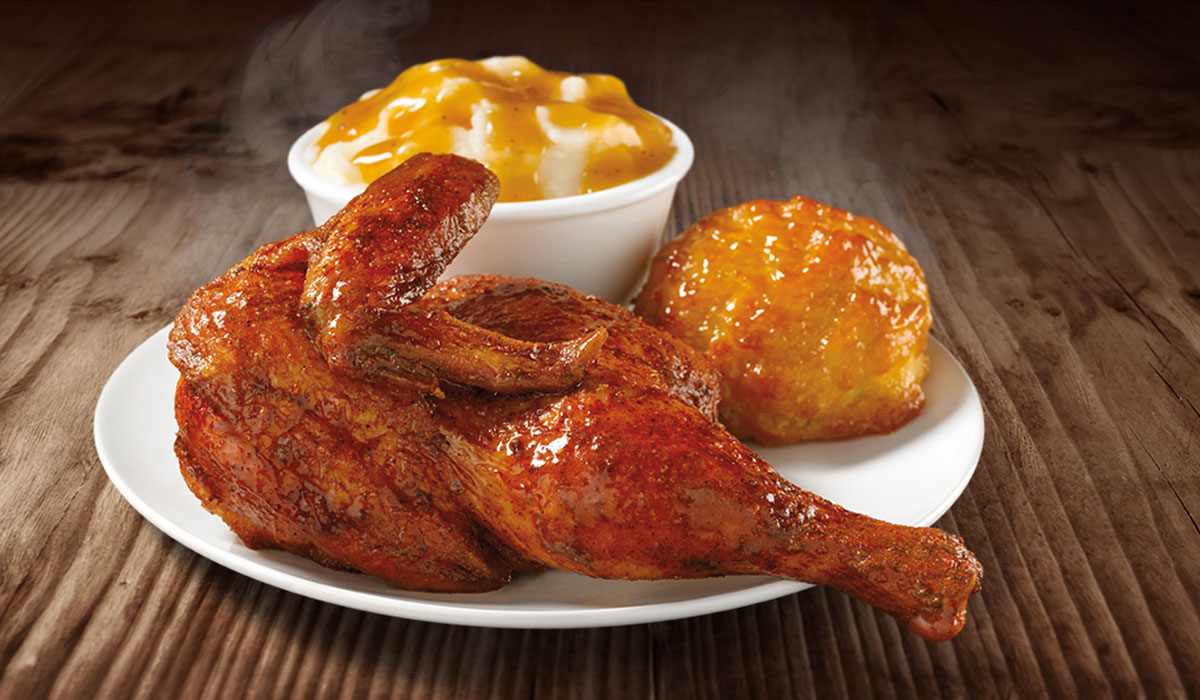Church’s Chicken is gearing up for an eventful 2019. After a stellar year, one that saw the 66-year-old brand produce its best comparable sales performance since 2014, the company announced its first global brand positioning ever back in October. Details are still trickling out, but it promises to be a broad refresh that touches nearly every aspect of the organization—from internal communication to training and service delivery, uniforms, product innovation, and more.
RELATED: Why 2019 will be a game-changer for Church’s Chicken.
One tangible change took place in early December, when Church’s announced that Alan Magee, formerly senior director of brand marketing at Moe’s Southwest Grill, was joining the company as its VP of digital marketing and technology. Magee took some time to chat with QSR about his plans for the role, how Church’s continues to evolve, and what we should expect from a transformative 2019.
Church’s Chicken has made great strides in the past year across several fronts. One of them is marketing and adjusting to a new era of digital information. How has the chain’s strategy shifted to meet changing customer demand, as well as taking advantage of the resources available?
It all starts with understanding our consumers and how they engage with brands—both our own and those of our competitors. Our approach is rooted in “consumer centric” market analysis. Basically, we review consumer engagement on digital channels as a primary source of information and communications. Insights learned are then broken down and analyzed for digital media, consumer relationship management, and social media strategy to develop marketing content that contains the right messages at the right times, and to the right people. You can see this approach playing out in our marketing activities, but also in the way we’re adapting the operational side of our business. Accessibility, for example, in terms of delivery and ordering ahead have been key areas of focus recently. By honing in on those new avenues for the brand, we have been able to cultivate new guest relationships and deepen our connection to existing core guests. That’s important for our success now and going forward. As consumer needs change, our brand will need to continue to evolve right alongside them to stay relevant.
How do you approach this challenge regarding less urban market areas, and areas where traditional advertising is still effective?
Traditional advertising is still effective for our brand because our guests still consume a variety of different types of media—including traditional placements like print, TV, outdoor, and radio. We do realize, however, that people in general are spending more time than ever looking at their mobile devices. As a brand, that’s a connection we do not want to overlook—it’s where our guests are, and we need to be there and capitalize on opportunities.
What we’ve found upon examining our markets is that geographically, there is very little differentiation in media consumption. Guests in urban, suburban, and rural areas all have mobile devices, so the key is to connect with all guests in all areas through that channel. Clearly, as far as traditional spending goes in those areas—we evaluate on the size and density of the market, but always with the awareness and understanding that traditional messaging and digital/mobile messaging should be consistent with each other and amplify the overall impact.

What are the challenges and benefits of marketing a legacy brand? How does Church’s strike a balance between telling the same story customers have come to expect and love, while at the same time, driving home a new, fresh message?
For Church’s, being a legacy brand means being able to say that our food and our brand both have real staying power and brand equity. There’s a confidence that comes with that which allows people make strong, lasting connections with Church’s. That’s exciting. At the same time, the new generation of guests are driven by different expectations that matter more to them than our legacy status, such as delivery which is more about expanding our services to build new pathways to the brand. So, as we evolve, we will be striving to meet the needs of both modern and legacy guests. Our story has made an impact over the years, and it has always been focused on the brand’s hallmarks such as hand-breaded fried chicken made in small batches throughout the day, and scratch-made Honey-Butter Biscuits. For 66 years, it’s always been that way. It always will be. And, it’s the foundation of Church’s success. Moving ahead, we will retain our core fundamentals, but we will also strive to connect with new guests to make sure their needs are met.
How is Church’s approaching digital at this point? Where do the greatest opportunities lie?
We are in the early phases of our digital journey. We are launching new technologies and channels to better connect with guests on their terms. The biggest opportunities are with closing the loop of accessibility. In other words, no matter where you go within the Church’s digital ecosystem, you can easily order and find the information that you need.
[float_image image=”https://www.qsrmagazine.com/wp-content/uploads/2019/12/ChurchAlan.jpg” width=”50″ link=”” caption=”” When we’ve done our job right, at the end of the day that ‘real food, real people’ feeling is noticeable in all we do.”” alt=”” align=”left” /]
The second biggest opportunity is in the social media space, and creating content that is more directly targeted to our core fan base. This is what the really strong digital brands have done, and we want to achieve, or supersede, their level of success in the near future.
Our goal is to create new technology with new channels and close the gap of accessibility through website landing pages, phone apps, social media and anything people look to for information. It is extremely important to connect on an emotional level with our fans and to build relationships. Social media is as much about personalization on a one-to-one basis as it is to a one-to-many basis. We have to build relationships with guests so that they choose to engage with us and stay with us.
With a new global positioning in the works, why did Church’s feel that now was the perfect time to refresh and adjust the brand’s message?
For one thing, there are more brands and more options than ever before from which consumers can choose. Instead of four options for lunch, there can now be up to 20. As a brand, it’s important to evolve to stay within what we call guests’ “consideration set.” By growing domestically and internationally, we felt it was the right time to make sure we have the strongest positioning to separate us from the competition—not only within our own category, but across all possible quick service and fast casual choices. We must differentiate ourselves from others, so when guests compare us to competitors, they will clearly see that Church’s is not just “another place to get food”—rather, we’re the place to get good, quality food plus lots of choices and innovative flavor, all at an exceptional value.

How do you make sure that the core values and selling points of Church’s is communicated in the most effective way?
At the very heart of our brand is the concept that Church’s excels at creating real food, prepared by hand by real people, each and every day. This essential core value guides how we engage with consumers, whether it’s in our culinary development and execution, advertising, service style, or the digital experience. When we’ve done our job right, at the end of the day that “real food, real people” feeling is noticeable in all we do. That’s the fun and challenging part of the job; making sure that our goals are brought to life across hundreds of domestic and international destinations, but all connected to the same simple truth.
From another perspective, one of our core business values is to become the Global Franchisor of Choice, which means that we need to be the restaurant brand that people want to own because we are a brand with a strong consumer following. So, even though it’s a different audience, real food made by real people has to deliver traffic and sales to our franchisees.
Lastly, from a personal perspective, how exciting was it to step into such a dynamic position with a beloved brand such as Church’s?
Church’s is a brand with a strong core of fans, a rich heritage, and proud history. Personally, this presents an exciting challenge during an exciting time. It’s a tremendous opportunity to make a difference because a person doesn’t get too many chances to put his or her handprint on a legacy brand that occupies a dynamic space and is evolving so rapidly. It is definitely a challenge that has me very excited.








